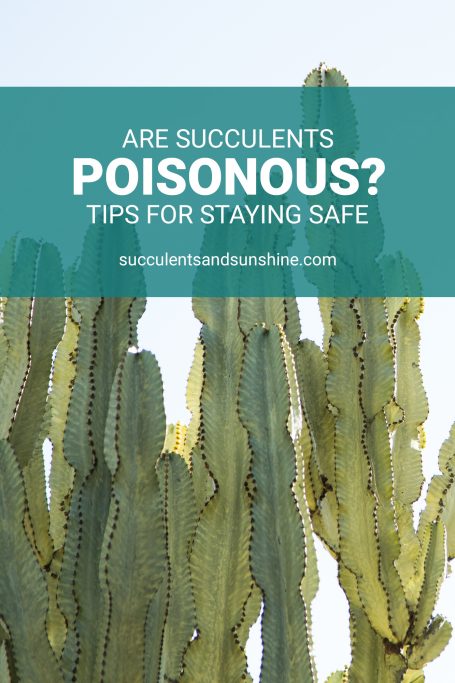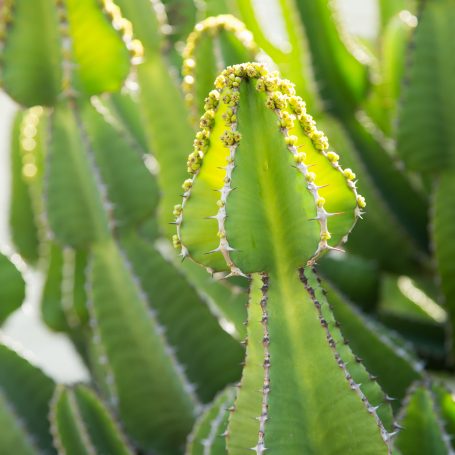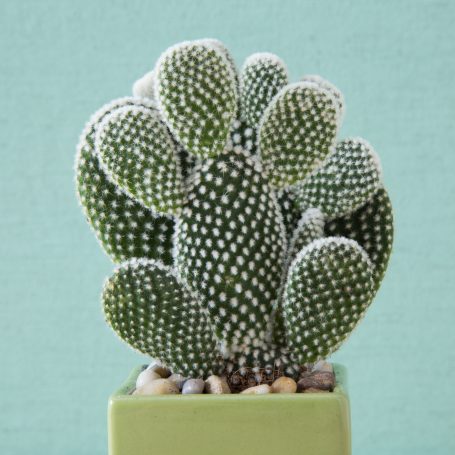Are succulents poisonous?
While not all succulents are poisonous, it's a good idea to know the few that are and what type of threat they may pose to humans and animals.
Succulents and Sunshine is reader supported. We may earn a commission, if you purchase through links on our site, such as Mountain Crest Gardens, Amazon, or Etsy. We only promote products we use and trust.
When I first started growing succulents I hadn't considered the fact that some of them might be poisonous or dangerous, especially since I knew some succulents like Aloe vera and Opuntia ficus-indica (Prickly Pear) can be eaten. I also knew (from too much experience) that the spines on cacti could also be painful.

However, now that I have a very curious toddler it's something I've become much more aware of. As I've researched the topic, I've discovered that a majority of succulents don't pose a threat to humans. There are a few more that can be potentially dangerous for animals.
Overall though, succulents are pretty safe as far as toxicity is concerned. I'm finding that the spines and needles are the most dangerous part of succulents.
In general, if you don't know what type of succulents you own, I'd highly recommend calling poison control if your child ingests any succulent. While they likely will not cause any serious harm, it could make them sick.
If you have dogs or cats, or any other animal that roams your house or near your succulent garden it's a great idea to look up the type of succulents you own and see what potential threat they are to your animals. While many animals are smart enough to avoid plants that can make them sick, not all will.
Euphorbias
One of the more commonly known poisonous succulent is the Euphorbia family. Euphorbias contain a white sap in their leaves that can irritate skin. While not all people react as intensely, the sap will generally cause a rash to appear wherever it came in contact with skin.
It's best to use gloves when handling Euphorbias to avoid skin contact with the sap. You also shouldn't ingest the sap or a Euphorbia plant in general.

Kalanchoes
While not dangerous for humans, many Kalanchoes can cause animals to become sick if they eat the leaves. Usually it will cause some sickness but is rarely fatal.

Cacti and Succulent Safety
The two genera listed above are the only two that I found consistently listed as potentially harmful to humans and animals as far as being poisonous. However, it's equally important to keep sharp succulents out of reach of children and animals.
When you are decorating with succulents indoors, place cacti and sharp succulents such as Agaves out of reach for both children and animals.
While some have sharp spines that can easily cause harm, some are more subtle but still irritating. One of my least favorite cacti as far as needles go is Opuntia microdasys. These little guys are the worst! One slight bump and you'll be pulling needles out of your hand for days, not to mention the subtle sting and irritation that accompany them.

For outdoor succulent gardens try to keep anything sharp away from sidewalks or areas where children and pets frequently play. Also let your children know that touching the spikes can be painful!
Just a few simple measures can help keep everyone safe while roaming your garden.
When potting cacti, you can use gloves to help prevent getting poked by their spines.
Another way to avoid contact with these sharp succulents is to wrap them with a towel or newspaper before planting. Then you can hold onto the towel or newspaper without getting spines in your hands.
Again, it's helpful to know which succulents you own and do a little research to see if they may pose a threat to any of your loved ones. Fortunately though, succulents are pretty safe plants overall!